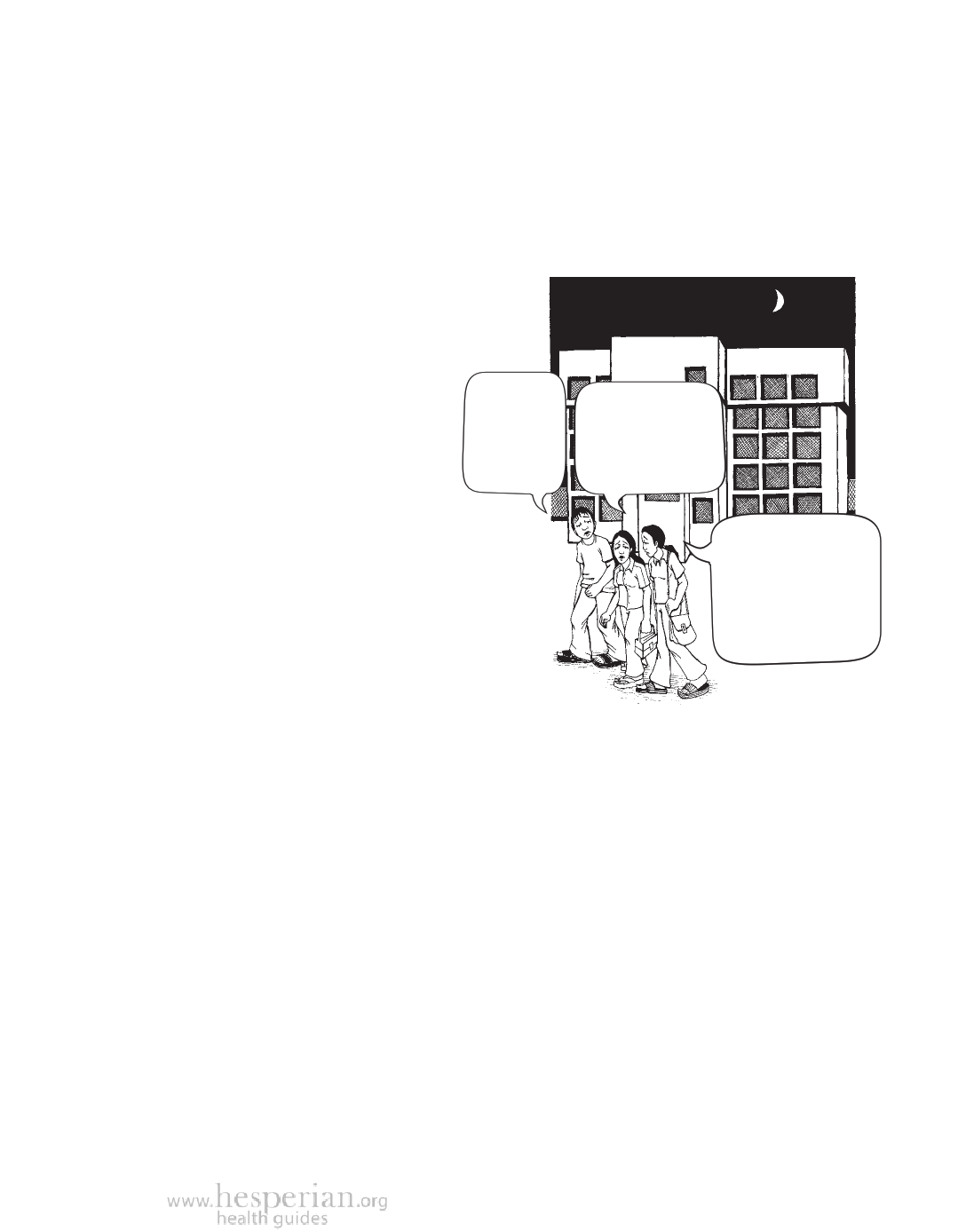
Avoiding and Controlling Toxics 451
We cannot choose what air we breathe, what water we drink, or what
materials our employer makes us work with, and we often cannot know what
we are being exposed to in the things we eat or the products we use. For this
reason, we need to organize businesses and governments to reduce the use of
toxics and the threat of toxic pollution. Many people working together in the
shared belief that something is too harmful have the power to make change.
We can force companies
to clean up
The responsibility for toxic
pollution lies mostly with
polluting industries like power
plants, manufacturing, or oil
and mineral extraction, while
the burden of living with toxic
pollution and cleaning it up
The
chemicals
we work
with are
making us
sick.
usually falls on the people
who live near the problem.
Some communities have been able to
shift the responsibility and show that a
particular industry or company creates
a problem and should clean it up and
commit to safer practices. (For stories of
communities that have forced companies to
clean up, see pages 344, 465, 483, and 521.)
The company
could use fewer
toxic chemicals
and give us better
protection.
But the company
won’t admit these
chemicals are
problems. It’s up
to us to make the
company take our
safety seriously.
Pressure governments for better safety standards
It is government’s responsibility to protect people from pollution. But powerful
corporations and international financial institutions pressure them to get rid
of or ignore regulations about the use of toxics. It takes a lot of community
pressure for governments to make and enforce laws that protect people,
especially in countries struggling to attract businesses to invest there. But
community-based campaigns can force changes in laws (see pages 417, 465,
466, 473 and 480) as well as use existing environmental laws (see Appendix B).
Press for changes in how products are made
Many industries have developed ways to replace toxic materials and production
methods with ones that are more sustainable and less damaging to people’s
health and the environment. See page 458 for more about clean production
methods and ways to influence businesses to adopt them.
Change consumption patterns
In the end, there is too much consuming by the wealthy. Less consumption and
waste, using enough but not too much, is a big part of the solution.
A Community Guide to Environmental Health 2012